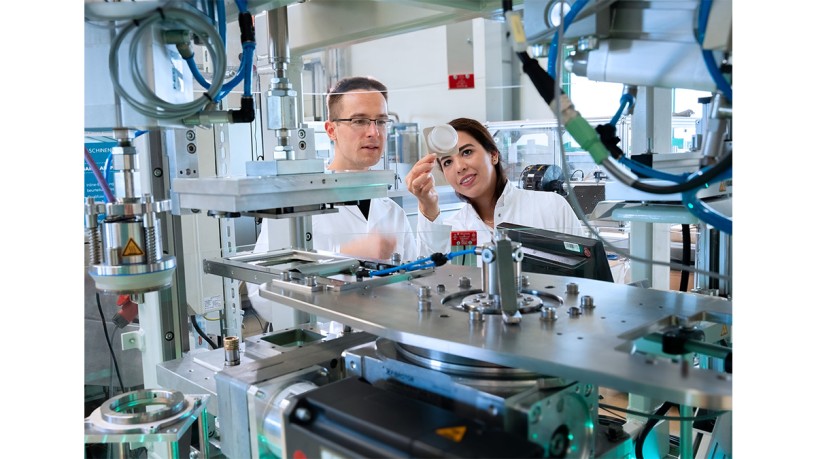Recycling Takes Centre Stage
Clear targets
The draft contains clear targets. These include the reduction of packaging waste, the use of post-consumer recycled material, new requirements for packaging design, the promotion of sustainable packaging solutions through extended producer responsibility, and a revision of the regulations on labelling and transparency of packaging. As the draft was adopted by the EU Parliament at the end of April and the final vote is scheduled for the autumn due to the recent EU elections, the regulation could be adopted next year. A transitional period of 18 months is then planned.
Reduction of packaging waste
A central requirement of the regulation is the reduction of packaging waste. By 2030, the amount of packaging waste must be reduced by 5 % compared to 2018 and at least 70 % of all packaging waste must be recyclable. In addition to plastic packaging, the requirement is also aimed at paper and cardboard packaging, among other things.

©Werner & Mertz
Use of post-consumer recycled material
The regulation also stipulates the use of post-consumer recycled material in all new packaging that contains plastic. PCR is plastic made from consumer waste that has been collected and recycled. The size of the respective targets depends on the type of packaging.
Improving packaging design
Last but not least, the regulation also focuses on the design of packaging. At the same time, the focus is also on the materials. Functional printing varnishes are also on the monitoring list. Siegwerk, one of the world's leading suppliers of printing inks and coatings for packaging applications and label has, for example, already reacted to this and expanded its strategic focus on coatings further. To this end, the company recently bundled all of its recyclable coating solutions in its Cirkit product portfolio. The company already offers a wide range of functional printing coatings and is continuously developing new, customised solutions that comply with existing and upcoming European legislation and pave the way for a recyclable future for packaging. From now on, a new, standardised naming concept for the company's growing portfolio of functional printing coatings will ensure even greater recognition and transparency for all stakeholders along the entire value chain, another key requirement of the new regulation.
Extended producer responsibility
Another concern of the new EU packaging regulation is the improvement of extended producer responsibility (ERP). The system provides for the manufacturers and distributors of packaging to assume greater responsibility throughout its entire life cycle. This includes taking back, recycling and reuse. The aim is to encourage companies to use more sustainable materials. New systems are intended to cover the costs. There are currently various ERP systems that are operated in the individual member countries.
Suppliers are already reacting
Some of the manufacturers have already reacted to the approaching regulation. One example is a co-operation between the branded goods manufacturer Werner & Mertz based in Mainz, Germany and the plastics expert ALPLA. Since September 2023, 50 percent of the bottles of Rorax Pipe Free Power Granules have been made from red post-consumer recyclate. The special feature is that until now there was no possibility for high-quality recycling of coloured plastic from household recycling bags or bins (Gelber Sack/Gelbe Tonne). Thanks to an additional step in the recycling process, red-coloured flakes could now be sorted out and reused. This concept significantly simplifies recycling.
Another example is the K3® r100 packaging solution from the manufacturer Greiner Packaging. The cup made from the cardboard/plastic combination K3® was honoured with the World Star Packaging Award in January. It features a special separation technology. A unique tear-open mechanism allows the outer cardboard wrap to be intuitively separated from the plastic cup and recycled. With the latest development, the K3® r100, the materials separate themselves even before they reach a near-infrared (NIR) sorting system in a recycling plant. This makes detection, sorting and recycling considerably more efficient. Before the actual recycling process, the solution ensures that cardboard and plastic end up in the right material stream during the initial sorting process. Symington's is the first user in the United Kingdom to utilise the packaging solution for its Oatburst food brand.
These are two different approaches to fulfilling future requirements. Conclusion: Manufacturers are ready for the regulation.




